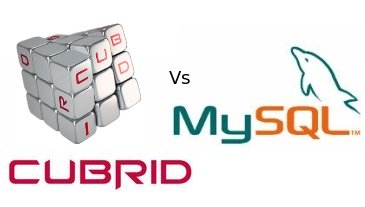Comparing CUBRID and My SQL isn’t simple both being open source SQL-based relational database management systems are heavy competitors of each other.CUBRID is just like MySQL but when it comes in terms of fastness,especially in those cases when a web application generates huge concurrent requests CUBRID is far ahead of MySQL.To start up with I have made a small table to compare a few factors.
| Factors | CUBRID | MySQL |
| Architecture | Relational Model | Relational Model |
| Operating System | Windows, MACOSX,Linux | UNIX,Symbian,AmigaOS,Windows,MAC OS X Linux |
| Indexes | Reverse | Full-text,Hash,R-/R+ ,Tree |
| Partitioning | Hash,List,Range | Composite(Range+Hash),Hash,List,Range |
| Interface | GUI,SQL | SQL |
| Database Capabilities | Except,Intersect,Blobs and Clobs,Inner Joins,Inner Selects,Merge Joins | Blobs and Clobs,Inner joins,Inner Selects,Merge Joins |
| Max Blob/Clob Size | Unlimited | 4 GB |
| Max Table Size | Unlimited | MyISAM storage limits: 256TB; Innodb storage limits: 64TB |
An example to make you know how faster CUBRID works.
A small query to count no of visitors in an article.
In MySQL
SELECT article FROM article_table WHERE article_id = 130,987
UPDATE article_table SET read_count = read_count + 1 WHERE article_id = 130,987
In CUBRID
SELECT article, INCR(read_count) FROM article_table WHERE article_id = 130,987
As soon as the SELECT query is run, CUBRID increments the mentioned table field by 1 on the fly and automatically returns the updated data to the user.This shows how fast CUBRID is then MySQL.But as of now MySQL is the world’s most popular and widely used open source database technology and data storage system.Many open source application create magic for others by using MySQL database.If you are new to database technologies and deep data storage MySQL provides a best platform to understand and work with database systems
On the other hand CUBRID offers equivalent syntax elements that are available in either MySQL or Oracle databases.Hopefully in the near future, CUBRID will be able to catch up and exceed MySQL.

